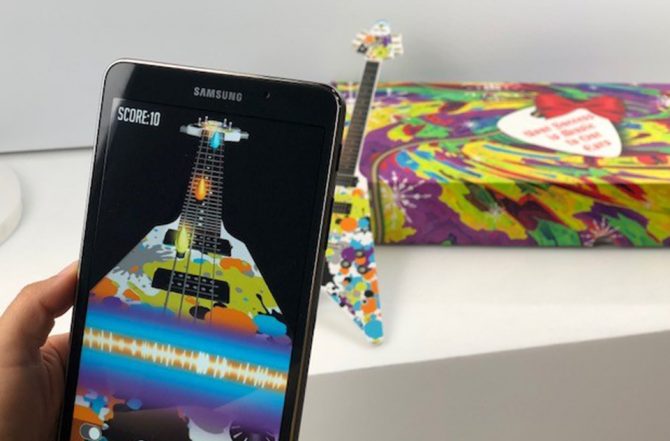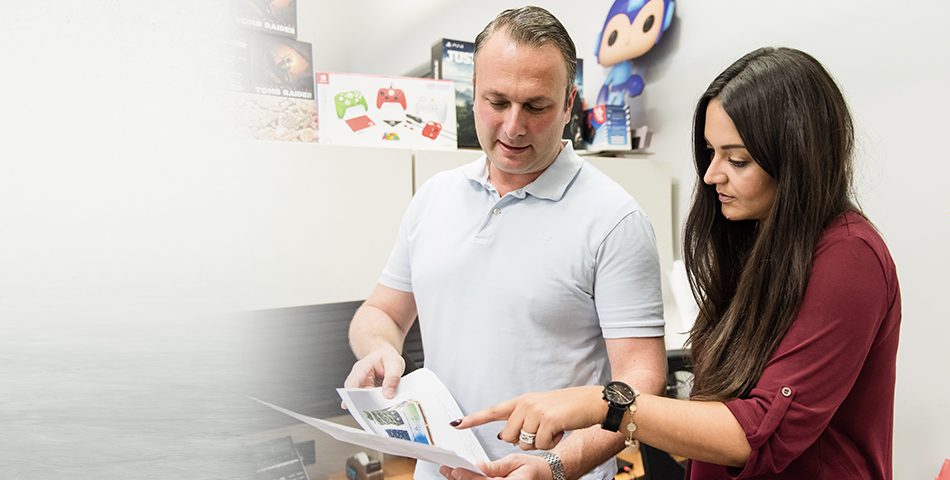Augmented Reality: Creating 3D Packaging

Augmented Reality, (AR) adds layers of digital content over real world environments. Digital screens are augmented with superimposed computer-generated images over a user’s view of the real-world, thus enhancing one’s current perception of reality – augmenting reality. In simpler terms, AR appears in direct view of an existing environment and adds sounds, videos, graphics to it. The AR/VR is expected to reach a market size of $209.2 billion within the next 5 years!
AR can be found in a variety of packaging including point of sale displays, media campaigns, and event and subscription boxes. You may not realize it, but you have probably used AR at least once. Some common mobile device applications that use AR are Snapchat and Pokémon Go. Other examples include AR City, Animojis, and Ink Hunters – where you’re able to see how a tattoo would look on you without having to go through the process.

Where did AR even begin? One of the fore fathers of AR, Bob Sproull, created what is widely considered to be the first virtual reality head-mounted display (HMD) system in the 1950s. In 1968, computer scientist Ivan Sutherland, invented the first VR/AR head mounted headset.
AR works through Simultaneous Localization and Mapping (SLAM) and Depth Tracking. With these two steps, your device can detect 68 unique parameters and is used through contextualized reflection. More and more beauty companies have implemented augmented reality that allows their customers to test products before making any purchases.
Modiface, acquired by L’Oréal, is an AR mirror that can show cosmetics in real-time. Using artificial intelligence and AR, they allow consumers to virtually try on lipstick and eye shadow by projecting the products onto their reflection. The new models not only identify the exact shade of foundation you need based on your face or complexion, but also condition on your skin. Cosmetic giant, Sephora, has installed 3D AR mirrors to give customers digital solution to interact with their products. In the age of short attention spans, the AR mirrors and AP’s gives customers a chance to try on products without the hassle of applying different products, removing them and repeating the process.

Other examples of companies implementing AR include Target, Sally Hansen, and Zara. Target just rolled out a test of its new augmented reality experience for beauty products, Target Beauty Studio, on Target.com to virtually try on hundreds of makeup items. With Sally Hansen’s ManiMatch App, one can find the perfect nail color without applying a single brush stroke. Zara is taking their shopping experience to a new level where you point the camera and the clothing will come to life on a model.
How does this benefit you? Consumers that experience AR try-ons are 60% more likely than standard users to buy an item. 40% of the consumers are willing to pay more for a product if they have experienced it through AR. 61% of shoppers prefer to shop at stores that offer AR over ones that don’t. Augmented reality is a way for you to create intimate environments and control your message.
For more information on packaging and augmented reality, visit bay-cities.com. Feel free to email us at mktgbaycities@bay-cities.com or call 562-948-3751.


